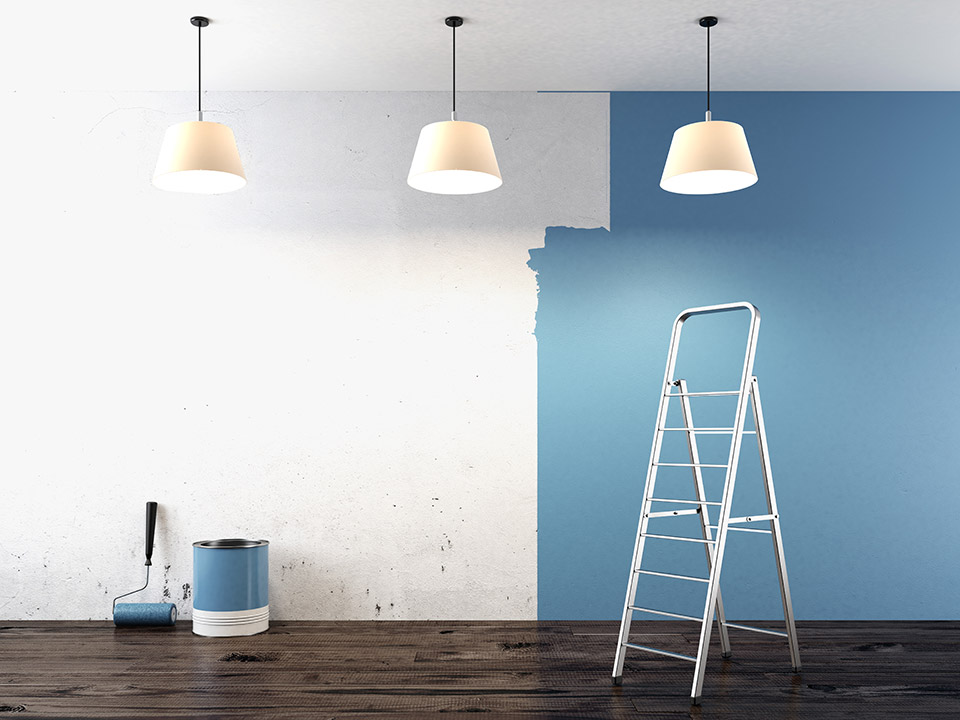When you’re setting out on either a remodeling or decorating project in your home, it’s easy to get overwhelmed. Depending on how extensively you’re planning for it, the details are such that it could well be the largest thing you’ve ever planned out. Not being a project manager (unless you are!) it’s important to try to be logical by taking things step-by-step until you have all the details organized perfectly.
Here are five remodeling and decorating tips that might help you before you get started.
Creating a Slick Home Office
If you have a home office, it needs to feel completely separate to the rest of the home. In essence, it helps if it’s decorated and laid out in a way that shouts, “Work only.” Get in, get the work done, and leave.
By planning things this way, it helps avoid possible procrastination especially on the weekend when it’s most likely to happen because you’re already in relaxation mode. Productivity apps that block certain websites during specific times of day are also helpful too.
Most home offices aren’t as expansive as the main office. Because of this, you’ll want to pick out furniture from this company that is suitable for a smaller floor plan. Look for functionality and opt for minimalism over trying to fit everything you could possibly need into a small space. Go digital with virtually everything and keep the clutter at a bare minimum. The plan is to only spend time there to work and nothing else.
Choose a Consistent Color Scheme
When you’re going through the property redecorating it, then it’s a perfect time to change the color scheme in the entire home. This is perhaps the only time that it’ll be convenient to do without causing a huge problem. Take advantage of this opportunity to dream up what color palette is preferred. When you live with a partner, consult them about this and run through color palette choices with them using color swatches. Visit a DIY store together to look at options there and read some interior design books or magazines to get inspired too.
Consider how the color choice will look in different rooms. For instance, when using a certain color mix in the living room, it may not be ideal in the kitchen area. Sometimes, there’s a way to alternate the colors and how they’re used, or you can swap in a new neutral color and remove one to mix it up a little bit while still keeping the overall aesthetic consistent. See how you can play with colors picked room-by-room to get some variation and suitability for the purpose of activity in each room.
Advanced Planning is Necessary
Planning takes many forms with an extensive remodeling project. Even with decorating but not tearing down any non-bearing walls, it can still be a large project.
With planning, doing it as far in advance as possible is helpful. You may need to make some changes to the property that require planning permission before you can go ahead. Depending on the building supplies or decorating products selected, they may need to be ordered in advance to be sure to get the exact shade, plaster type, carpeting or wood grain finish to the flooring that you’re wanting.
In terms of costing the remodeling or decoration project out, the more specific that you can be with the details, the better. It’s all too easy to roughly estimate the cost of, for instance, replacing bathroom wall tiles and flooring, and then discover later that the exact tiles that you subsequently selected are three times the original estimate. Repeated often over an extensive project, the overrun on costs can break the budget when a homeowner is not careful.
Ongoing Costs?
It’s easy to focus on the remodel or decorating and not consider what happens after the workers are gone and the dust is cleaned up.
Providing for an energy efficient design and using heating appliances that are designed with energy usage concerns in mind tends to reduce the future heating and cooling costs of the average home by 10-30 percent. Even when you aren’t replacing home appliances right away as a cost saving move, how walls are sealed, plastered and decorated has an impact too. Tending to window frames that have seen better days even when replacing the windows isn’t on the cards, yet it matters too.
Think about what future repairs are likely as a result of the planned changes. How durable are the materials selected? Cutting corners on material costs when remodeling too much too soon can come back to hurt you later when they don’t stand the test of time. The repair costs and inconvenience then compound on the error in judgement. It’s also best to pay up for better quality materials and cut back on the number of rooms being worked on to maintain standards.
Get a Detailed Contract
To avoid any confusion over what is and is not included in an agreement to remodel part or all of a home, it’s important to have a contract with the parties involved. The contract must be detailed enough to include all the relevant points of interest, who pays for what, and exactly what materials are to be used.
Other details like the property address, the principals, the start date and the date of completion should all be included. Hiring an attorney with some experience in these types of contracts is useful in this instance and avoids missing out something crucial in the final draft.
It’s quite typical that a home is remodeled every decade or so. Because of that, this might not be the last one of these that you’ll be going through. Even if you’re only planning to decorate a few rooms, you never know, you might end up changing plans by knocking down a wall or two to make fewer, larger rooms instead. However, create a plan for everything you can predict at the beginning and then stick to it as best you can.








